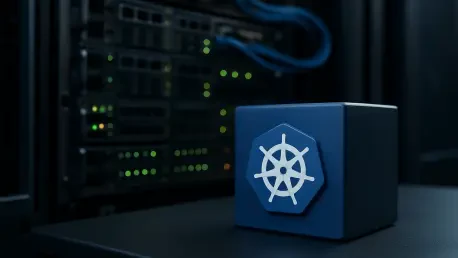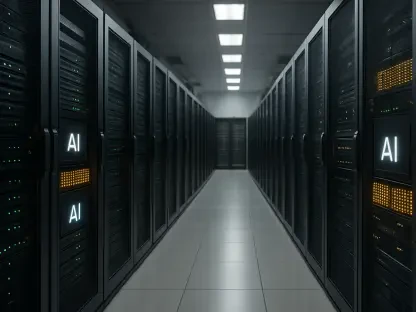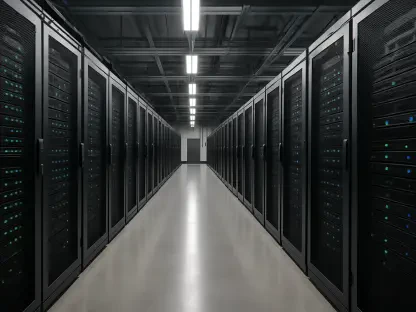Kubernetes has solidified its place as the bedrock of cloud-native infrastructure, transforming the management of containerized applications since its introduction by Google over a decade ago. Renowned for its ability to orchestrate stateless microservices with exceptional scalability and adaptability, it stands as the preferred platform for countless enterprises navigating the complexities of modern IT environments. Yet, as the technological landscape pivots sharply toward AI-native workloads—such as training sprawling language models, executing distributed inference tasks, and processing colossal datasets—a critical question looms large. Is Kubernetes, with its foundational design rooted in general-purpose computing, equipped to handle the highly specialized demands of AI-driven applications? This exploration delves into the inherent strengths of Kubernetes, the unique hurdles posed by AI workloads, and the ongoing efforts to reconcile the two. By examining whether this orchestration giant can stretch to meet emerging needs or if alternative systems must take the stage, the discussion aims to uncover the path forward in an AI-dominated era.
Navigating the Mismatch Between Kubernetes and AI Demands
The analogy of forcing a square peg into a round hole aptly describes the friction between Kubernetes and AI-native workloads. Originally crafted to excel at managing short-lived, stateless tasks, Kubernetes struggles with the long-running, stateful processes that define many AI applications, often spanning multiple nodes in intricate configurations. These workloads demand high-throughput data streaming and ultra-low-latency responses for inference tasks—areas where Kubernetes’ inherent abstractions can introduce significant overhead. The rapid pace at which AI is reshaping technology adds urgency to this dilemma, as delays in adaptation could hinder innovation. Determining whether Kubernetes can evolve swiftly enough to address these discrepancies, or if entirely new orchestration frameworks are required, has become a pivotal concern for organizations betting on AI to drive future growth. The stakes are high, as the right infrastructure will determine the efficiency and scalability of AI deployments in competitive markets.
Another layer of complexity arises from the specific operational needs that AI workloads impose, which often clash with Kubernetes’ core strengths. Hardware scheduling stands out as a primary challenge, with Kubernetes treating essential AI accelerators like GPUs and TPUs as secondary resources rather than primary ones. This approach results in suboptimal allocation and inefficiencies during GPU-intensive tasks, such as model training, where fairness and performance are critical. Additionally, the prolonged nature of AI jobs contrasts sharply with the ephemeral services Kubernetes was built to manage, creating bottlenecks in job orchestration. Compounding this issue is the lack of native support for handling massive datasets, which require rapid staging and streaming capabilities that Kubernetes does not inherently provide. These fundamental misalignments underscore the need for a deeper evaluation of how—or if—Kubernetes can pivot to accommodate the raw, specialized requirements that AI applications demand.
Innovations Aimed at Aligning Kubernetes with AI Needs
Efforts to adapt Kubernetes for the rigors of AI workloads are gaining momentum, though many solutions appear as temporary fixes rather than holistic integrations. Projects such as Kubeflow and KubeRay are at the forefront, tailoring Kubernetes to support machine learning pipelines and distributed training frameworks with varying degrees of success. Similarly, tools like Volcano target high-performance computing demands, attempting to optimize resource allocation for complex AI tasks. Major cloud providers are also contributing by developing custom operators and GPU schedulers to mitigate some of Kubernetes’ limitations in handling accelerators. While these initiatives demonstrate a commitment to bridging the gap, they are often critiqued as “bolted-on” enhancements that lack the seamless cohesion needed for long-term reliability. The industry watches closely as these developments unfold, weighing their potential to transform Kubernetes into a viable platform for AI against the backdrop of ever-escalating workload complexity.
A deeper concern is whether retrofitting Kubernetes with such add-ons represents a sustainable strategy for the future. As AI workloads grow in both scale and intricacy, the reliance on external tools and extensions may yield diminishing returns, creating fragmented systems that are harder to maintain and scale. This patchwork approach raises critical questions about the underlying architecture of Kubernetes and its capacity to evolve without compromising its core strengths in flexibility and standardization. Discussions are intensifying around the possibility of a more fundamental redesign to embed AI-specific capabilities directly into Kubernetes, rather than layering solutions on top. Alternatively, the emergence of entirely separate orchestrators designed specifically for AI could shift the paradigm, relegating Kubernetes to a supporting role in a broader ecosystem. The outcome of these debates will likely shape how enterprises architect their infrastructure for AI over the coming years.
Imagining a Tailor-Made Solution for AI Workloads
Envisioning a control plane explicitly designed for AI workloads offers a striking contrast to the current capabilities of Kubernetes. Such a system would place GPU-first scheduling at its heart, ensuring optimal allocation of accelerators critical to AI performance. It would also integrate data pipelines natively, enabling seamless management of massive datasets with high-speed streaming and staging built in from the ground up. Beyond technical efficiency, this ideal platform would prioritize ultra-low-latency inference and high concurrency for real-time applications, while incorporating cost-aware policies to manage the significant expenses tied to GPU resources. This vision highlights a purpose-built approach that diverges sharply from Kubernetes’ general-purpose framework, prompting speculation about whether the existing orchestration giant can adopt such specialized features without losing its universal appeal. The concept alone sparks intrigue about the future direction of infrastructure design in an AI-centric world.
This hypothetical AI-native control plane also fuels a broader debate about the role Kubernetes should play moving forward. Attempting to mold Kubernetes into a system that incorporates these niche capabilities risks overcomplicating a platform already valued for its simplicity and versatility. On the other hand, developing a standalone orchestrator tailored for AI could fragment the ecosystem, creating challenges in integration and standardization that Kubernetes has historically helped resolve. A hybrid model, where Kubernetes serves as the foundational layer for general infrastructure while coexisting with specialized AI tools, emerges as a potential compromise. This approach would allow enterprises to leverage the strengths of both systems, though it demands robust platform engineering to unify disparate components under a cohesive developer experience. The tension between adaptation and innovation remains a central theme as the industry grapples with aligning infrastructure to AI’s transformative potential.
Charting the Path Forward for AI and Orchestration
Reflecting on the journey so far, the intersection of Kubernetes and AI-native workloads reveals a landscape of both promise and limitation. Throughout the discourse, it became evident that Kubernetes, despite its unparalleled dominance in cloud-native orchestration, faces significant hurdles in natively supporting the hardware demands, data intricacies, and performance imperatives of AI applications. Existing solutions, while innovative, often appear as stopgap measures rather than enduring answers, underscoring a structural mismatch that challenges even the most adaptable platforms. The exploration of a purpose-built AI control plane illuminated what a specialized system could achieve, setting a benchmark that Kubernetes struggles to meet without substantial evolution. These insights paint a picture of an industry at a crossroads, balancing the legacy of a proven tool against the urgent needs of a rapidly advancing field.
Looking ahead, the focus shifts to actionable strategies that can harmonize the strengths of Kubernetes with the demands of AI. Embracing a hybrid ecosystem, where Kubernetes continues to anchor enterprise infrastructure while specialized AI orchestrators handle targeted workloads, stands out as a pragmatic solution. Platform engineering will play a pivotal role in this setup, crafting internal developer platforms that abstract the underlying complexities and empower teams to innovate without infrastructure constraints. Furthermore, investing in deeper integrations—rather than surface-level extensions—could help Kubernetes address some AI-specific needs without overhauling its core. As technology continues to evolve, the industry must remain open to new paradigms, ensuring that tools and approaches adapt dynamically to meet emerging challenges. This forward-thinking mindset will be crucial in shaping an infrastructure landscape that not only supports AI’s current demands but also anticipates its future trajectories.









